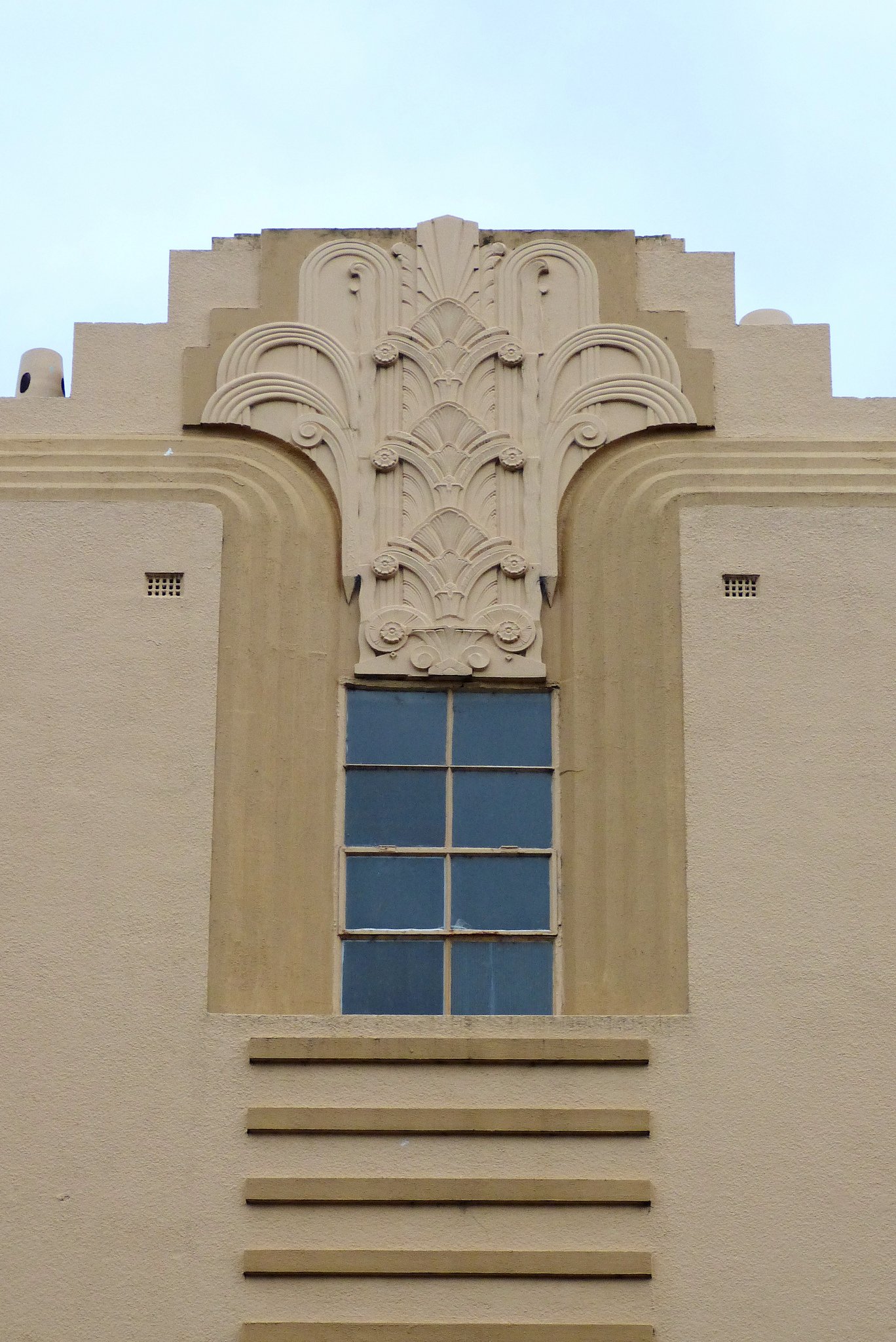#5212. Elegant Art Deco Façade with Vertical Relief Ornament

The photograph captures a magnificent example of Art Deco architecture. We are looking at a fragment of a building façade with a characteristic vertical accent above the window opening. The main focus is drawn to the decorative element with an expressive relief ornament resembling a stylized fountain or palmette motif.
The façade is executed in a light beige color, creating a soft contrast with the bluish window glazing. The decorative composition above the window presents a complex symmetrical structure with fan-shaped elements radiating from the central axis. Note the rosettes rhythmically arranged along the sides of the central motif, giving the composition additional expressiveness.
The stepped form of the upper part of the façade and the geometrized ornament clearly indicate the influence of Art Deco, popular in the 1920s-30s. The architect masterfully utilized the plasticity of the façade, creating an interplay of light and shadow on the relief elements. Below the window, there are horizontal protruding strips that balance the vertical dynamics of the upper part of the composition.
This decorative approach to façade design is characteristic of public buildings from the heyday of Art Deco, when functionality was combined with expressive decor to create a memorable architectural image.